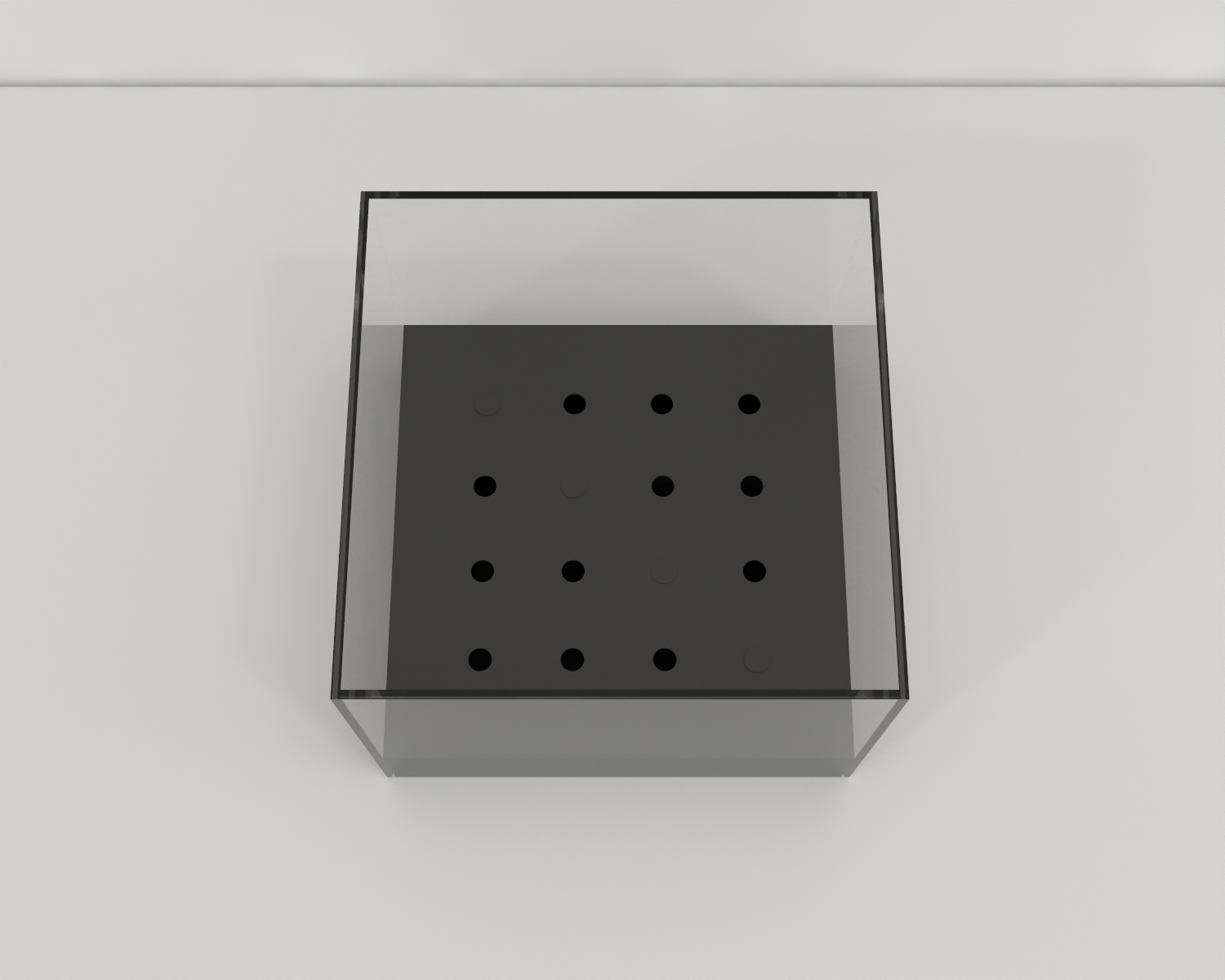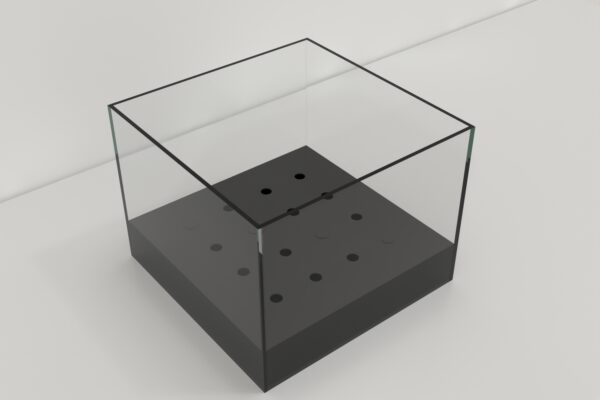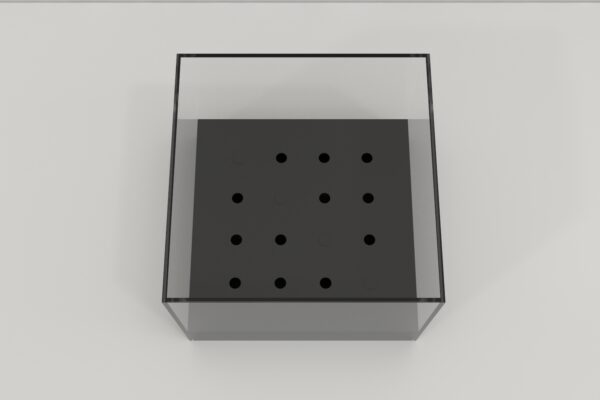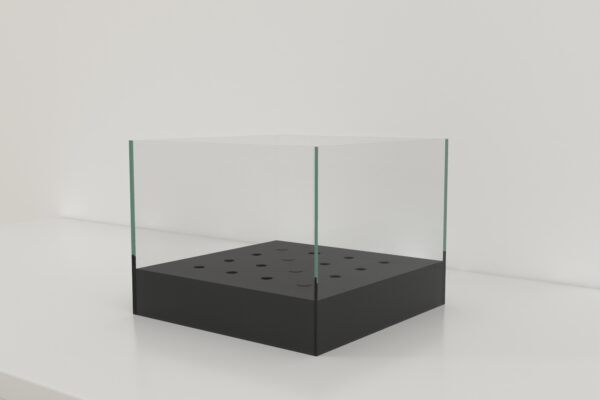The Olfactory Hole Board test is an adaptation of the classic Hole Board Test that is often used in the assessment of unconditioned behavior, cognition, and social interaction.
It consists of three testing transparent acrylic boxes of dimension and a removable grid-patterned hole board. The holes of the grid come equipped with lids to allow the closing of holes to create variations in the grid configuration.
The Olfactory Hole Board apparatus combines the advantages of the conventional Hole Board with that of the Open Field task. The apparatus is simple to construct and easy to use. The apparatus is also highly modifiable to enable different modes of investigation. The removable hole board allows the use of different configurations of open and closed holes by using lids. Placing different odors simultaneously during the task creates a more naturalistic olfactory environment. Testing protocols can be varied as per the needs of the investigation such as using a single odor per task or multiple odors. The task can be used to access the effects of pharmacological manipulations and lesions on olfactory-based behavioral responses.
Mazeengineers offer the Olfactory Hole Board.




